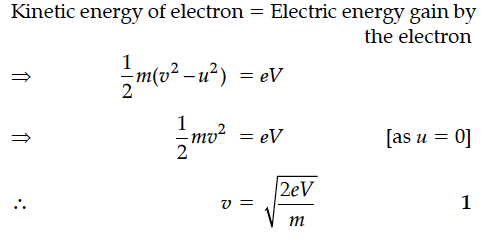An electron is accelerated through a potential difference V. Write the expression for its final speed, if it was initially at rest.

For any charge configuration, equipotential surface through a point is normal to the electric field. Justify.
Obtain the expression for the potential due to an electric dipole of dipole moment p at a point ‘d’ on the axial line.
The electric potential due to point charge 3 nC at distance of 9 cm is
(a) 270 v
(b) 3 v
(c) 300 v
(d) 30 v
Electric potential at a distance r from the point charge is proportional to
1. \(r^2\)
2. r-1
3. r0
4. r+1
A point charge Q is placed at point ‘O’ as shown in figure. Is the potential at point A, i.e., , greater, smaller or equal to potential, at point B, when Q is (i) positive, and (ii) negative charge?
Figure shows a point charge + Q, located at a distance R/2 from the centre of a spherical metal shell. Draw the electric field lines for the given system.
What is the amount of work done in moving a point charge around a circular arc of radius r at the center where another point charge is located ?
Give an example of a material each for which temperature coefficient of resistivity is:
(i) positive, (ii) negative.
Why should electrostatic field be zero inside a conductor ?
The plot of the variation of potential difference across a combination of three identical cells in series, versus current is shown below. What is the emf and internal resistance of each cell ?
What is the value of the angle between the vectors and for which the potential energy of an electric dipole of dipole moment , kept in an external electric field , has the maximum value.
